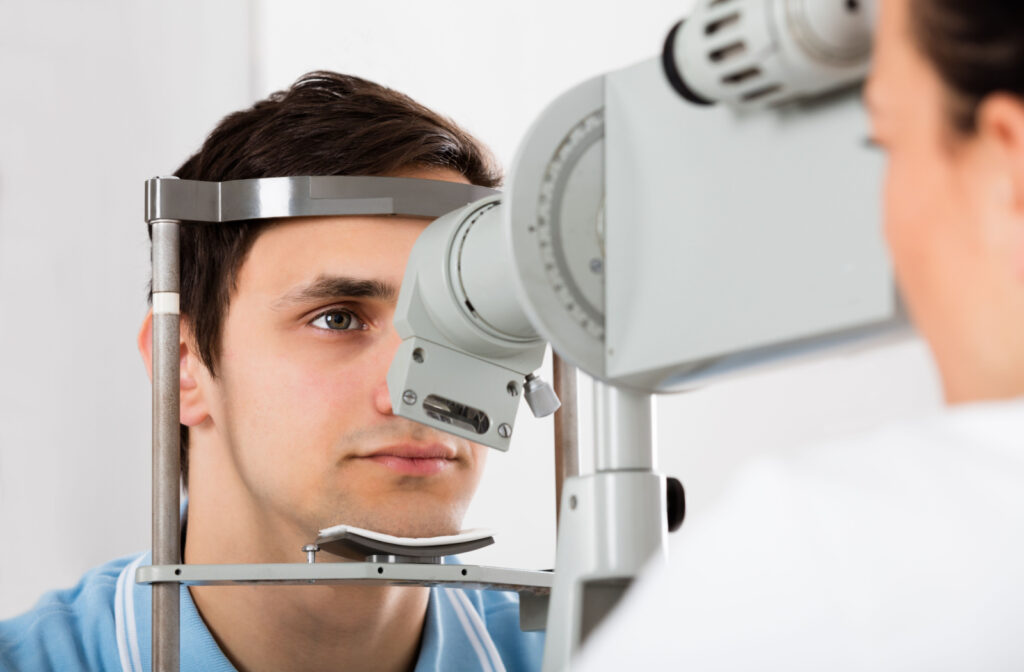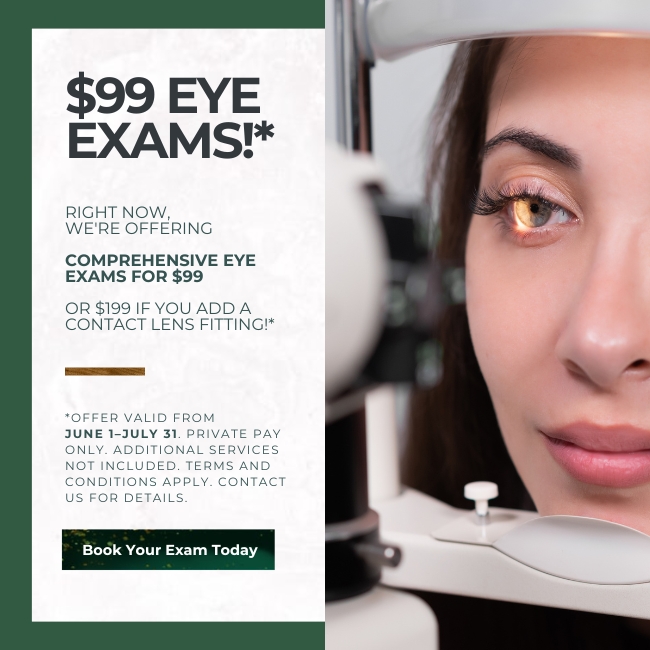In an era dominated by screens, from the minute we wake up to the moment we drift into slumber, our eyes often bear the brunt of our digital existence. The pervasive use of smartphones, tablets, computers, and other digital devices has ushered in a new-age concern—digital eye strain (computer vision syndrome).
Digital eye strain can be caused by prolonged screen time and is usually accompanied by symptoms such as tired eyes, headaches, blurry vision, and dry eyes. As digital eye strain becomes increasingly common in people of all ages, it’s vital to get support for your everyday eye health with regular comprehensive eye exams.
Understanding Digital Eye Strain
How often do your days begin with the glaring light of smartphones or the unblinking stare of computer screens in offices and end with a TV binge? All that screen time might be affecting your eyes.
Digital eye strain is a cluster of symptoms that include eye discomfort and other vision-related issues resulting from prolonged usage of digital devices. Even 2 hours of continuous screen time can cause symptoms of digital eye strain.
Looking at screens is unlike reading words on a page and can make your eyes work harder because information on screens can be less sharply defined, and screens can be affected by reflections and glare.
Some of the other factors that contribute to digital eye strain include poor lighting, poor posture, and keeping your screen too close or too far away.
Symptoms of Digital Eye Strain
Symptoms of digital eye strain can be mild or severe, and they may occur after prolonged screen time or at the end of the day. Common symptoms of digital eye strain include:
- Dry eyes
- Blurry vision
- Double vision
- Eye discomfort
- Burning sensations
- Headaches
- Watery eyes
- Neck, shoulder, and back pain
- Eye fatigue
- Difficulty focusing
- Light sensitivity
How to Prevent Digital Eye Strain
While removing all digital devices from your life often isn’t possible, there are measures you can take to prevent and manage digital eye strain symptoms. Taking steps to stop digital eye strain before it affects you can be crucial for improving your daily visual comfort.
Blink Consciously
When digital screens captivate our unwavering attention, we often forget the simple act of blinking. Prolonged screen use can disrupt your natural blink rate, but blinking is necessary to keep your eyes moist and prevent dryness.
Dry eyes caused by insufficient tears can lead to discomfort and difficulty carrying out daily tasks. Remember to blink consciously when using digital devices by closing your eyes for a few seconds to lubricate them and reduce dryness.
In some cases, we may recommend artificial tears to help you further avoid dry eye symptoms caused by digital eye strain.
Follow the 20–20–20 Rule
The 20–20–20 rule is an eye exercise that helps provide your eyes with much-needed relief from digital eye strain. Every 20 minutes, take a 20-second break and look at something 20 feet away. Taking small, frequent breaks helps your eyes rest during long periods of screen work.
Try the Figure Eight Exercise
Another simple exercise is the figure eight. The figure eight exercise involves looking at the floor 8 feet away. Trace your eyes slowly in a figure eight shape. Do this in one direction for 30 seconds and then in the opposite direction for 30 seconds.
Adjust Your Screen Settings
A glaring screen in a dim room is a recipe for discomfort. Adjusting your screen brightness to match the ambient light around you can help reduce eye strain.
Use Proper Lighting
Ensure your workspace is well-lit to reduce glare and strain. Position your screen to avoid reflections and glares from overhead lighting or nearby windows.
Follow Healthy Ergonomic Practices
Screen position and posture can contribute to digital eye strain. Try to sit upright at your desk, and keep your screen at arm’s length from your eyes. Also, try to ensure your screen is at eye level or slightly below eye level to prevent neck and shoulder pain.
Try a Digital Detox
In a world intoxicated by the allure of screens, a digital detox may be the antidote your eyes crave. Actively tracking your screen time can help you designate screen-free hours in your day or reduce your average daily screen time.
Try to engage in activities that don’t involve staring at a screen—read a physical book, walk, stretch, or engage in other outdoor recreational activities.
Get Regular Eye Exams
With increased digital screen usage, your family should get regular adult eye exams and children’s eye exams to monitor and maintain your visual health.
There is growing evidence to suggest that conditions like myopia may be linked with digital eye strain for children. Eye exams make it possible to catch eye conditions early and take steps to support your family’s long-term eye health with strategies and treatments like myopia control.

Navigating the Digital Landscape with Care
Digital eye strain is not a riddle without a solution. While it’s a common condition that can affect anyone who spends long hours in front of digital screens, understanding the causes and symptoms of this condition means you can take steps to prevent and manage it.
If digital eye strain symptoms affect your daily life, book an appointment with Pacific Pier Optometry to discuss your concerns, receive a proper diagnosis, and safeguard your vision by taking steps to keep your eyes healthy.



